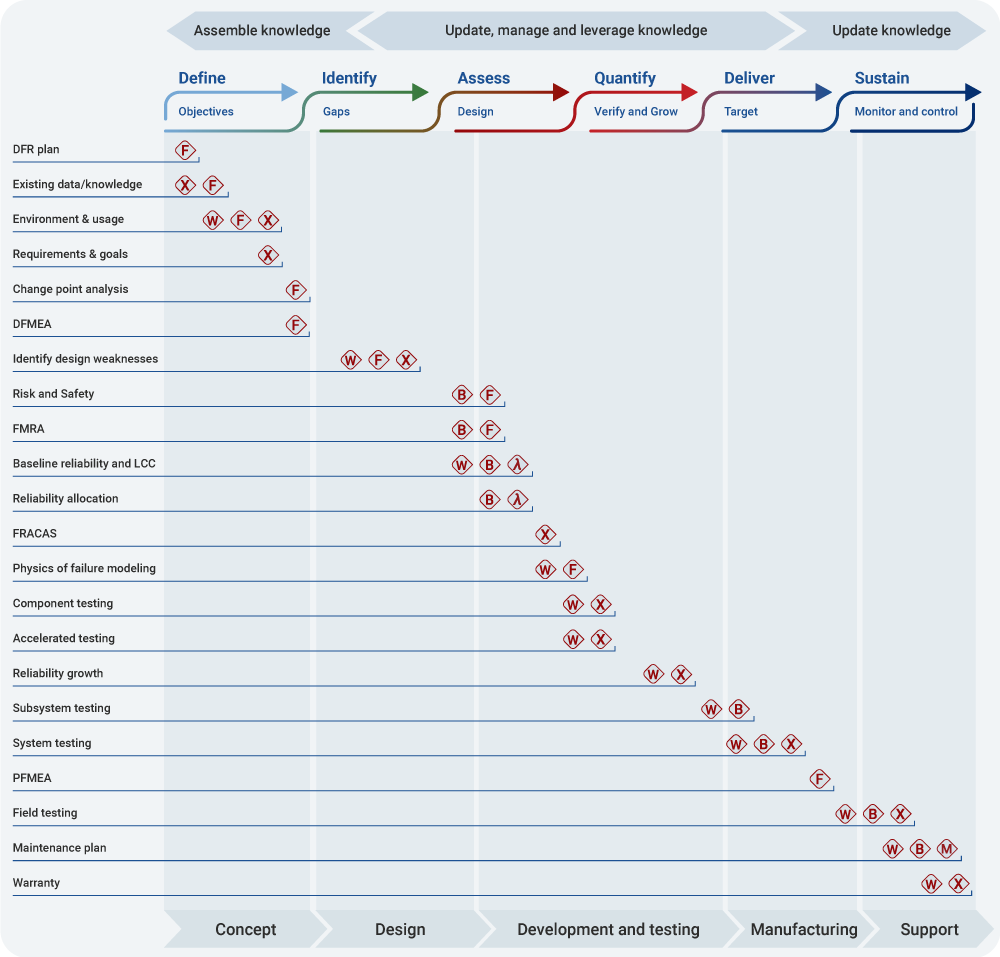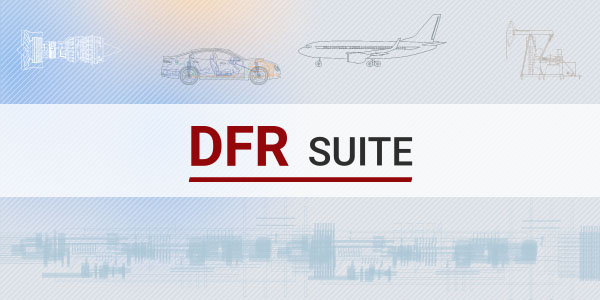By this stage, prototypes should be ready for testing and more detailed analysis. This involves an iterative process where different types of tests are performed, the results are analyzed, design changes are made, and tests are repeated.
A wide array of tools is available for the reliability engineer to uncover product weaknesses, predict life and manage the reliability improvement efforts available in
ReliaSoft Weibull++. With testing comes data, such as failure times and censoring times. Test results can be analyzed and its techniques to statistically estimate the reliability of the product and calculate various reliability-related metrics with a certain confidence interval. Such calculations can help in verifying whether the product meets its reliability goals, comparing designs, projecting failures and warranty returns. Additionally, using
Weibull++'s Accelerated Life Testing module, you can cut down on the testing time, and by carefully elevating the stress levels applied during testing, failures may occur faster and thus failure modes are revealed more quickly.
A very important aspect of the DfR process also includes performing root cause analysis using
XFRACAS software, which provides better understanding of physics of failure and can discover issues not foreseen by techniques used prior to testing (such as FMEA).
Using
BlockSim's RBDs, you can model the overall reliability of the system, identify weak areas of the system, find optimum reliability allocation schemes, compare different designs and perform auxiliary analysis such as availability analysis. Fault tree analysis may be employed to identify defects and risks and the combination of events that lead to them.





